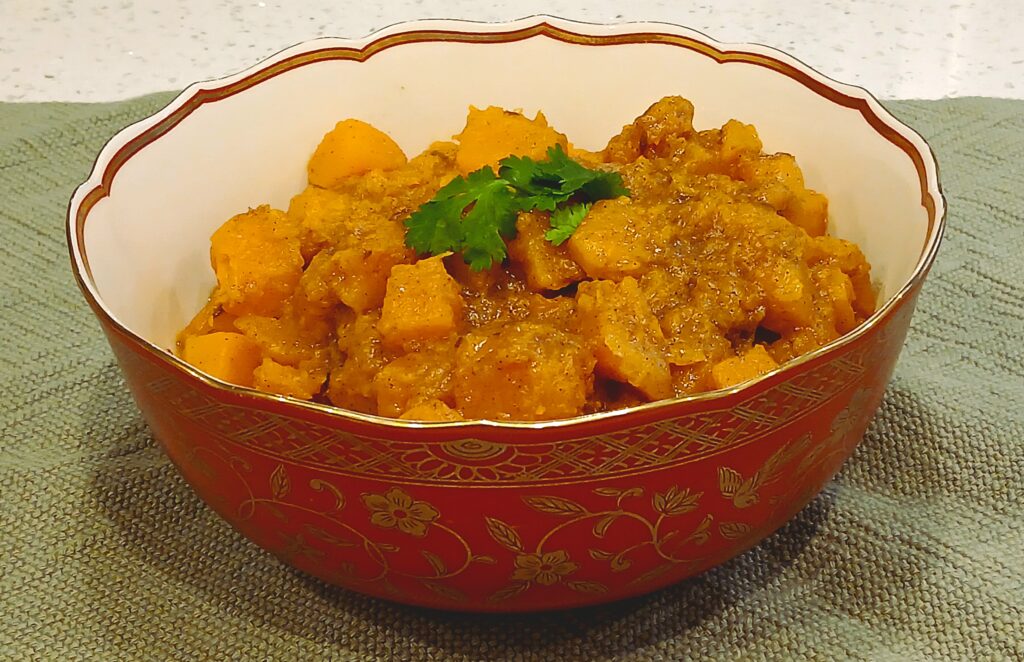Special Holiday Sides

This American-Style Butternut Squash Subji is an exquisite side dish for autumn dinner parties and holiday gatherings. If you’re someone who enjoys adding at least one new item to all the traditional Thanksgiving and Christmas favorites, I highly recommend this sublime approach to what might be an otherwise ordinary baked squash. When I recently served this dish to a group of discerning cooks, everyone loved it!
Subji is a term in Indian cooking for “vegetable dish.”
Please don’t be alarmed if you resist hot, spicy food because I will never offer you a recipe that calls for cayenne or chilies. Here, I’ve added a few spices—cumin, coriander, cinnamon, and cardamom—with a light hand to weave layers of mild flavor. Also, I’ve cooked this dish in coconut oil and coconut milk, which give a subtle sweetness to the butternut squash, a vegetable that can occasionally have a tinge of bitterness.
Interestingly, ancient Ayurvedic cooking did not call for the use of chilies that burn the tongue and tummy because chilies did not exist in India until the late 16th century. It was only when the Portuguese began trading with India that chilies began to be integrated into traditional Indian cuisine.
This dish is quite easy to make, although I will add the caveat that it’s smooth going after you peel the squash, which is a bit of a project! (I apparently need a new peeler because mine was useless; I peeled the squash carefully with a sharp paring knife, which felt safer than a larger chef’s knife. All this took about 10 minutes for one butternut squash.) You can certainly skip this step and cook it with the skin on. However, this stovetop cooked squash is a bit more elegant once it’s peeled.
I hope you enjoy this lovely American-Style Butternut Squash Subji as you gather around your holiday table with family and friends. It goes without saying that those of us who eat abundantly this Thanksgiving have so much to be grateful for. After all the busyness of creating a holiday feast, be sure to relish and articulate your good fortune with the communities of love that you foster as you share sacred—and delicious—food!





I cooked this tonight and it was absolutely delicious. I sprinkled sprouted pumpkin seeds on top. Yum!!!
What a great idea! Thanks!